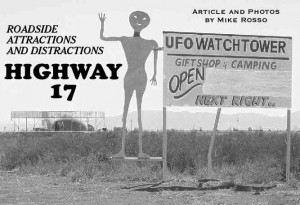Brief by Central Staff
Livestock – October 2002 – Colorado Central Magazine
Those with homes where the buffalo roam in Park County are still looking for a solution to their problems, although the county commissioners are trying.
The problem is that bison ranches abut residential subdivisions, and the buffalo often ignore fences, even if they’re in good repair (and sometimes they aren’t).
Thus Commissioner Leni Walker observed that “We’ve had complaints of buffalo rubbing on houses and tearing off siding.”
It isn’t just buffalo; plain old cows are a problem, too. Walker quoted an anonymous cattleman who said that “A cow’s one goal in life is to make a cowboy’s life miserable.”
Ron Swanigan, a homeowner in the Hartsel area, told of property damage, cattle trampling residential lawns, and destroying trees and fences.
Colorado is an open-range state — that is, you fence to keep out, rather than keep in. But if you’ve got a “legal fence,” and livestock invades, then you can sue for damages. A “legal fence” is at least three strands of barbed wire with posts no more than 20 feet apart. However, that kind of fence is prohibited by some residential subdivision covenants.
The county commissioners proposed forbidding grazing on any land zoned residential, which sounds simple enough, but it isn’t quite that simple.
On the contrary, things got complicated after that.
Richard Grumet, manager of the 100,000-acre Hartsel Springs Ranch, said he would remove the bison from residential zones within 30 days.
But no matter how your land is zoned, if you lease it for agricultural purposes, then the property is valued by an agricultural formula, rather than residential, and the result, according to Park County Assessor Dave Wissel, is “a much lower tax rate.” Thus, the county’s proposed ban on grazing in residential areas “would affect the taxes” of residential property owners who are leasing to cattlemen.
The upshot of the Aug. 22 meeting was that Wissel was appointed to head a group to try to come up with something that everyone can live with. His group includes the sheriff, along with representatives of the homeowner associations and the Colorado Cattleman’s Association.
As we see the problem, people new to rural living are learning the hard way that there’s a lot more to having livestock around than they realized. It reminds us of a friend who got a free house in college in exchange for looking after his landlord’s swine; he ended up dropping most of his classes that quarter because he was always running home to herd wayward pigs back into their pen.

